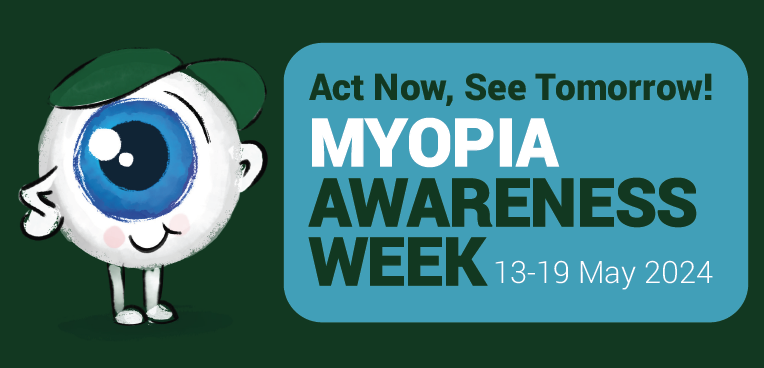
Dean Psarakis, B.Optom, Senior Research Optometrist
BHVI
With increasing rates of myopia worldwide, particularly within East Asia, there is a growing interest in understanding the origin and development of refractive errors with models aiming to predict the onset and development of myopia utilizing parameters such as axial length, uncorrected visual acuity, and corneal curvature.
While pediatricians have used percentile charts to predict the growth and development of children, such charts have only recently been used in eye care. This study aimed to develop a predictive model by creating percentile curves for axial length, using data gathered from a cohort of Chinese primary and secondary students.
In total, 12,780 children were recruited by the Wuhan Center for Adolescent Poor Vision Prevention and Control. Of these subjects, 12,554 attended a single visit, while 226 attended three times to establish longitudinal data for validation. The cohort was 5 to 16 years of age. The ocular parameters measured were axial length (AL), spherical refractive error (SR), and corneal radius (CR), and only data from the right eye was used in the final analysis.
This article confirms the epidemic of myopia in East Asia, with a prevalence of myopia at 5 years of age of < 10% (6.32% for boys and 4.00% for girls), but increasing significantly to 26.4% for girls and 27.0% for boys at 7 years, and 56.56% and 54.56%, respectively, at 8 years. By 11 years, myopia is above 80% in boys and girls, rising to 93.44% for boys and 87.93% for girls by the age of 16.
Gender and age dependency was similar to other cohort studies. On average, females had significantly shorter AL, steeper CR, and lower AL/CR ratios compared to males in each age group. There was a significant positive correlation between SR and CR and a negative correlation between SR and AL. A point of difference in this study is that no association between gender and spherical refractive error was found, contrary to the findings of He et al.1
From 6 to 15 years of age, all percentiles showed a growth trend in AL, except for those below the first quartile, where no statistically significant growth was observed after 12.
The AL percentiles were compared to Tideman et al.’s data based on a European cohort and showed similar values for children at 6 years of age.2 However, by 9 years of age, significant differences emerged, with the European 50th percentile value being 23.31mm in boys and 22.79mm in girls, compared to 24.32mm for boys and 23.72mm for girls in the Chinese population. At 15 years of age, the 50th percentile in the European cohort was 23.65mm in boys and 23.15mm in girls, while the same percentile in the Chinese group equated to 25.01mm in boys and 24.37mm in girls.
Previous studies have established the high correlation between the AL/CR ratio and spherical equivalent refractive error (Grosvenor).3 It has been proposed that a cut-off value in this ratio could be useful in detecting myopia, and this study found very similar values to Grosvenor and Goss (>2.99)4 and He et al. (>3.00).1 In this study, this value was seen between ages 7 and 8, where myopia first became the refractive group of highest prevalence.
The authors of this study acknowledge the obvious limitations in its inability of the percentile curves to be generalized to other ethnic populations. Nonetheless, establishing AL percentile curves provides a simple method for predicting myopia in a Chinese school-aged population and thus an opportunity for early management strategies that aim to reduce myopia progression and the development of high levels of myopia.
In summary, this study has demonstrated the value of establishing AL growth percentile curves and can aid in identifying the at-risk individual in developing myopia and high myopia.
Abstract
Growth Curves of Myopia-Related Parameters to Clinically Monitor the Refractive Development in Chinese Schoolchildren
Pablo Sanz Diez, Li-Hua Yang , Mei-Xia Lu, Siegfried Wahl, Arne Ohlendorf
Purpose: To produce a clinical model for the prediction of myopia development based on the creation of percentile curves of axial length in school-aged children from Wuhan in central China.
Methods: Data of 12,554 children (6,054 girls and 6,500 boys) were collected and analyzed for the generation of the axial length growth curves. A second data set with 226 children and three yearly successive measurements was used to verify the predictive power of the axial length growth percentile curves. Percentile curves were calculated for both gender groups and four age groups (6, 9, 12, and 15 years). The second data set was used to verify the efficacy of identifying the refractive error of the children using the axial length curves, based on their spherical refractive error from the third visit.
Results: From 6 to 15 years of age, all percentiles showed a growth trend in axial length, except for the percentiles below the first quartile, which appear to stabilize after the age of 12 (- 0.10; 95%CI, – 0.36-0.16; P = 0.23 for girls; – 0.16; 95%CI, – 0.70-0.39; P = 0.34 for boys); however, the growth continued for the remaining 75% of cases. The second data set showed that the likelihood of suffering high myopia (spherical refractive error ≤- 5.00D) during adolescent years increased when axial length values were above the first quartile for both genders.
Conclusions: The data from the current study provide a tool to observe the annual growth rates of axial length and can be considered as an approach to predict the refractive development at school ages.
Diez, P. S., Yang, L. H., Lu, M. X., Wahl, S., & Ohlendorf, A. (2019). Growth curves of myopia-related parameters to clinically monitor the refractive development in Chinese schoolchildren. Graefe’s Archive for Clinical and Experimental Ophthalmology, 257(5), 1045-1053.
DOI: https://doi.org/10.1007/s00417-019-04290-6
References:
- He X, Zou H, Lu L, Zhao R, Zhao H, Li Q, et al. Axial Length/Corneal Radius Ratio: Association with Refractive State and Role on Myopia Detection Combined with Visual Acuity in Chinese Schoolchildren. Pan C-W, editor. PLoS One [Internet]. 2015 Feb 18 [cited 2021 Oct 25];10(2):e0111766. Available from: https://dx.plos.org/10.1371/journal.pone.0111766
- Tideman JWL, Polling JR, Vingerling JR, Jaddoe VW V., Williams C, Guggenheim JA, et al. Axial length growth and the risk of developing myopia in European children. Acta Ophthalmol [Internet]. 2018 May [cited 2021 Oct 25];96(3):301–9. Available from: https://onlinelibrary.wiley.com/doi/10.1111/aos.13603
- Grosvenor T. High Axial Length/Corneal Radius Ratio as a Risk Factor in the Development of Myopia. Optom Vis Sci [Internet]. 1988 Sep 1 [cited 2021 Oct 25];65(9):689–96. Available from: http://www.ncbi.nlm.nih.gov/pubmed/3189494
- Grosvenor T, Goss DA. Role of the Cornea in Emmetropia and Myopia. Optom Vis Sci [Internet]. 1998 Feb 1 [cited 2021 Oct 25];75(2):132–45. Available from: http://www.ncbi.nlm.nih.gov/pubmed/9503439




